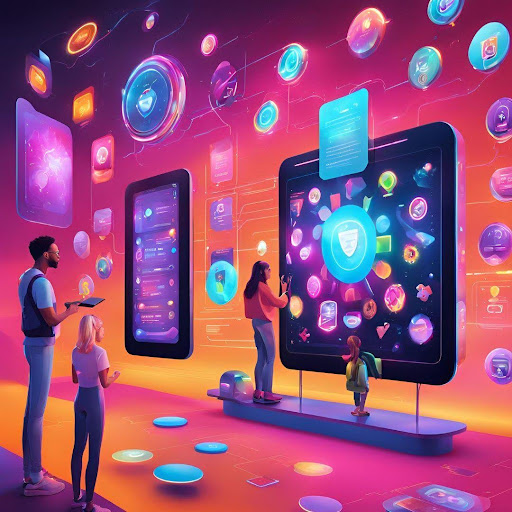Given the constantly growing role of technology in everyday life, people are also much less patient than ever before. There is an endless list of apps and websites all competing for just a little bit of our attention and a user’s attention must be grabbed. This is where gamification comes in, or the concept of using many features that are typical of a game to inject new life into a non-gaming environment in an effort to stimulate user engagement and future patronage.
Think about what it would be like if seemingly ordinary activities like learning a language or doing exercises were transformed into point earning, badge bearing, competition encouraging missions. It is this ability that we call gamification. But how do you make it even more useful and engaging and make people come back to your product day after day? Here we go with the few elements and factors associated with high-level successful gamification strategies.
Understanding Your Users: The Foundation of Fun
However, trying to award points and badges like there is no tomorrow, you need to know your audience first. What motivates them? What are their goals? What kind of problems would they prefer to solve?
According to CyberGhost (CG), when talking about the impacts of gamification, it is critical to understand human psychology to the highest level. It will be seen that the various segments of users will have differential reactions to the various gambits included in the structure. For instance, a fitness App may convey short term achievable exercise goals and guidelines to the casual fitness enthusiasts who do not exercise for a long time, but may not be appreciated by the trained gym freaks who may be expecting long term contained themes and goals.
The Power of Progress: Keeping Users on Track
The simplest column is easy and a popular method for deploying gamification involves tracking progress and rewarding activity. Just think that in mastering a foreign language you are given a badge for accomplishing ten daily practices. It gives one a feeling that you have achieved something and will want to do more.
Here are some ways to implement progress tracking:
- Visuals: Employ progress bars, levels, or experience points in order to raise the implementation’s visibility with the user. It makes them more motivated when they see their journey in that manner.
- Milestones: Users can be congratulated on their success or given certain prizes for achieving some targets.
The Thrill of the Challenge: Balancing Fun and Difficulty
The final great tool of gamification is challenges. They can provide the necessary spice and motivate users to achieve much more. Nevertheless, the issue is finding the right balance – how the content is challenging but not overly difficult.
Complications that are easy to solve become repetitive. When a challenge level is too high, users can easily get bored and abandon the application. Here are some tips for creating engaging challenges:
- A first step is to make such goals relatively easy at the beginning so that more users find them challenging.
- Make sure to regularly offer a wide variety of challenges some of which some level of expertise will be required.
- Be specific about which goals each challenge must address to make sure the challenge helps to improve user experience.
The Social Butterfly Effect: Building Communities Through Gamification
People like to interact with others; social presence is motivating, so one can always try to come up with a gamification system within your app or website. Leaderboards used to present top performers mean a healthy injection of competition and compel users to work hard to get to the top.
Here are some ways to leverage social elements in gamification:
- Team challenges: Enabling multiple users to work on same tasks and complete it in a shorter time and challenge other teams.
- Social recognition: Retweet or repost something that a user has done on social media or within the application.
- Referral programs: The following early implementation steps are proposed: incentivize an increase in the number of invitees.
Safety First: Gamification with a Responsible Edge
While gamification can be incredibly effective, it’s important to implement it responsibly. Here are some safety considerations:
- Avoid addictive behaviours. Do not inbox users or produce a feeling of FOMO that the user must log in constantly to not miss anything.
- Focus on intrinsic motivation. As we know bonuses are cool but focus on establishing an actual game interest and engagement into the core task.
- Be transparent about rewards. Explain in a very clear manner concerning issuing out and claiming rewards to minimise confusion.
Looking Beyond the Badge: Gamification for Learning and Growth
When most marketers and developers speak of gamification, their primary objective is not to have participants stuck for hours on their devices. Education, especially when it is facilitated by technology, can be a great way of advocating for learning. Visualisation: A language learning application with a fun-based learning playground to teach new vocabularies.
Here are some ways to leverage gamification for learning:
- Break down complex concepts into bite-sized, gamified challenges.
- There should be an individual concept that the users will follow while using the service, depending on the progress they have made.
- Deliver feedback as soon as possible that will encourage good learning behaviours among students.
Conclusion: The Gamification Journey
Fun elements are the method to make the target audience interested, motivated, and dedicated. If you are knowledgeable about your users, incorporate the right features and guards, and ensure safety and proper usage, then you can have a fully interactive gamification protocol. It should be emphasised here that, for most marketing gurus, gamification is all about providing an enjoyable experience that guides the user to accomplish desired objectives.






